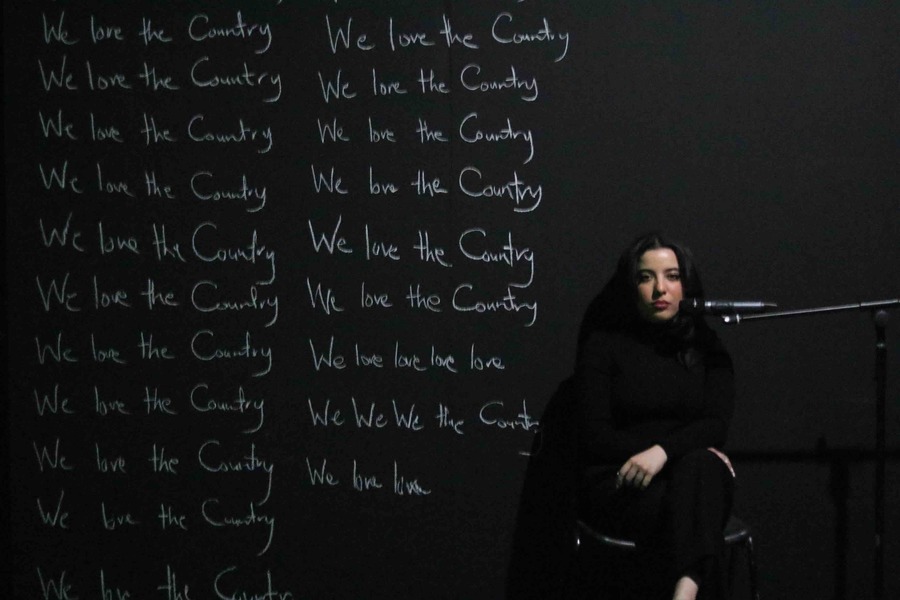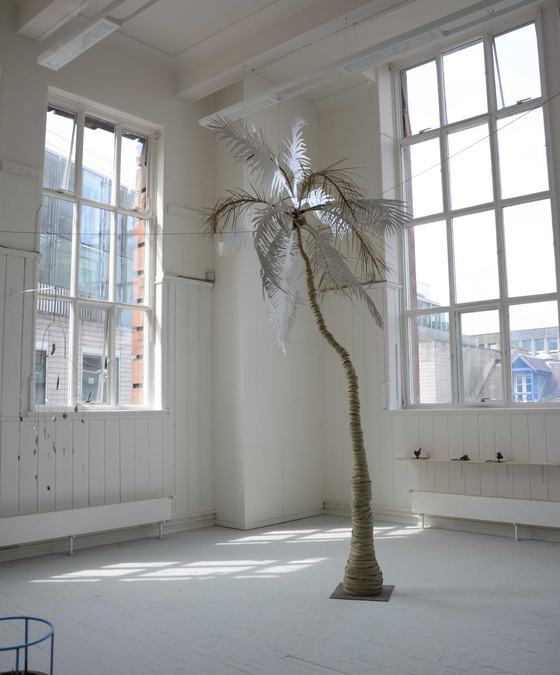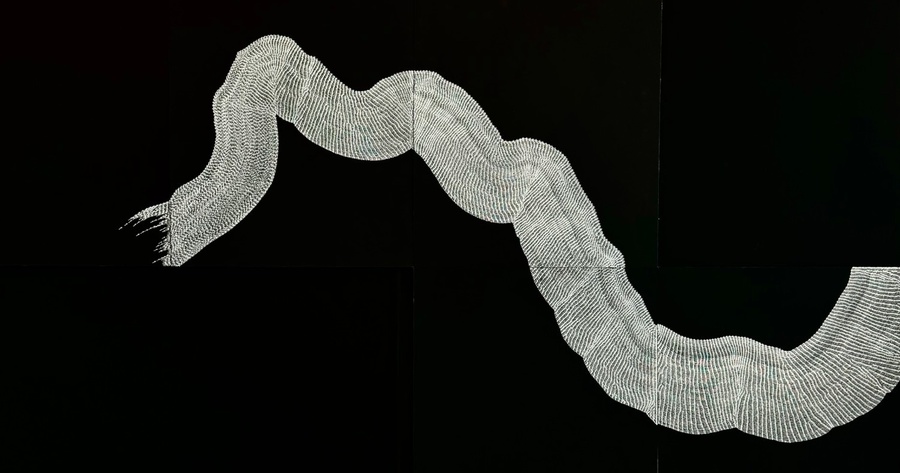Edinburgh College of Art Degree Show 2024: The Review
Graduates from Edinburgh College of Art's Fine Art degree show this year examine nationalism, gender identity and coastal ecologies
Ahed Alameri’s multi-dimensional installation We Love The Country is the stand-out work in a degree show that seems mostly disinterested with current global issues. The sound installation, an all-encompassing cacophony repeating the phrase ‘we love the country’, bounces off the building’s grand central staircase. Beguiling and powerful in its simplicity, it complements a more extensive, interview-style audio work in a dark room, with microphones and speakers suggestive of a performance. The work has an openness in terms of context that makes it relatable for many people; it can, at once, speak to the far-right nationalism that is currently surging throughout Europe (note the fixation on flying the Union Jack in political party broadcasts, especially in the run-up to the election) but also the fight for self-determination and liberation taking place across our planet – in Palestine, in Ukraine and in so many other places.
While many graduates play it a little safe with their degree show presentations, Snoz, aka Moz Hodnett, has taken a risk with their room-sized installation. A bodily, contorting latex sculpture is bound to a cage-like structure, swirling with yellows and greens. Snoz works with music, performance and drag too – it can be difficult to translate such a polymathic practice into a degree show showcase, but they have done so with great success – while also leaving a desire to learn more about their performance practices. Molly Mavor’s room-sized installation is one of the highlights of presentations from the Intermedia programme and similarly subverts ideas that degree show presentations need to be ‘neat’ or conform to a certain aesthetic. While there is certainly a DIY, punk-aesthetic in this showcase, there is also evidence of a delicate and intentional approach to making – the monochrome acetate transfers have taken form in works in ceramics, gel wax and foam board, straddling photography, collage, drawing and sculpture.
Meanwhile, Shiza Saqib’s delicate embroidery, painting and printed works are a welcome relief from some of the garish, over-sized paintings that could benefit from a reduction in size. Saqib’s gentle, organic palette of ultramarine blues and delicate whites makes for a therapeutic, calming experience. The mark-making here is slow and considered – seemingly approached with introspection and pauses to focus on the physicality of making. The sea and the sky seem to dominate the artist’s visions – compositions, consisting of drawn, painted and sewn forms meander and flow, taking the shape of rippling waves, a formation of flying birds, the effervescent light of a setting sun.
Sculpture particularly stands out in this year’s degree show. Fiona Goss’s silvery, glimmering palm tree sculpture in one of the larger spaces is one of several beguiling installations. Goss describes her practice as being a "collaborative endeavour with the environment" and this showcase seems particularly enamoured with coastal ecologies, explored through a combination of making on-site but also through gathering materials for later use in the studio. Justine Watt’s freestanding and wall-based sculptures are interspersed playfully through corridors and in rooms, immediately magnetic for their shapely and seductive forms. Seemingly mundane and domestic forms, such as wooden chairs and clothes hangers, are taken apart and reimagined in mobile forms that twist, mutate and spiral. Also apparent is a real joy in making using traditional methods such as steam bending and kerfing, repetitive processes which translate directly into the repeated motifs that form these works.
Sitting quietly in a corner of another room, Anna Avery’s wall-based sculptures fascinate with their ambiguity. The crafting process is not immediately obvious on first approaching the work, which encourages a closer look at the dense network of embroidery thread sewn into a digital print of a painting printed on recycled calico. Their forms are reminiscent of sculptures by El Anatsui (albeit on a much smaller in scale), but the organic patchwork of earthy colours also invokes looking at a mountainous, wild landscape from above.


